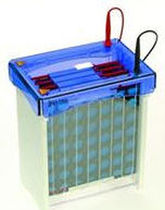
The National Center for Biotechnology Information (NCBI, USA) database lists five mRNA variants and one long noncoding RNA of the human GAPDH gene therefore, different functions of GAPDH may be elicited by different RNA variants or protein isoforms. In congruence with its expression variation, GAPDH is known to have versatile functions, including membrane fusion, apoptosis, regulation of stability and transcription of RNA, and instability and repair of DNA, besides its canonical role in energy production. Besides this pseudogene issue, many studies have shown that the expression of ACTB and GAPDH varies among different developmental, physiological, and pathological situations, with several references adduced herein. Considering that the transcripts of these pseudogenes might be mistakenly detected along with the authentic ACTB or GAPDH RNA using reverse transcription polymerase chain reactions (RT-PCR), we suggested that biomedical researchers take extra caution when using these two genes as references in RT-PCR. Because it is a general belief that the entire genomes are transcribed to RNA, these pseudogenes are likely transcribed, and their transcription is likely swayed by different developmental, physiological, or pathological conditions. The sequences of these pseudogenes are highly similar to the mRNA sequence of ACTB or GAPDH. In 2012, we reported a bioinformatics study showing that the ACTB and GAPDH genes in the human and mouse genomes have a large number of intronless pseudogenes located on different chromosomes. These data lead us to conclude that GAPDH and ACTB are poor reference genes for determining the protein loading in such techniques as Western blotting, a leading role these two genes have been playing for decades in biomedical research. ACTC1 and ACTBL2 belong to the ACT family with significant similarities to ACTB in protein sequence, whereas the four POTEs are ACTB-containing chimeric genes with the C-terminus of their proteins highly similar to the ACTB. All LC-MS/MS-identified GAPDH peptides at all positions studied are unique, but some of the identified ACTB peptides are shared by ACTC1, ACTBL2, POTEF, POTEE, POTEI, and POTEJ.


The five GAPDH mRNAs encode three protein isoforms, while our bioinformatics analysis identified a 17.6 kDa isoform encoded by the noncoding RNA. The National Center for Biotechnology Information (USA) database lists only one ACTB mRNA but five GAPDH mRNAs and one noncoding RNA. Although beta-actin (ACTB) and glyceraldehyde-3-phosphate dehydrogenase (GAPDH) are 41.7 and 36 kDa proteins, respectively, LC-MS/MS identified their peptides at all the positions studied. We performed polyacrylamide gel electrophoresis of human proteins with sodium dodecyl sulfate, isolated proteins at multiple positions, and then used liquid chromatography and tandem mass spectrometry (LC-MS/MS) to determine the protein identities.


 0 kommentar(er)
0 kommentar(er)
